Pencil Puzzler Revisited
by gzumwalt in Workshop > 3D Printing
34621 Views, 120 Favorites, 0 Comments
Pencil Puzzler Revisited
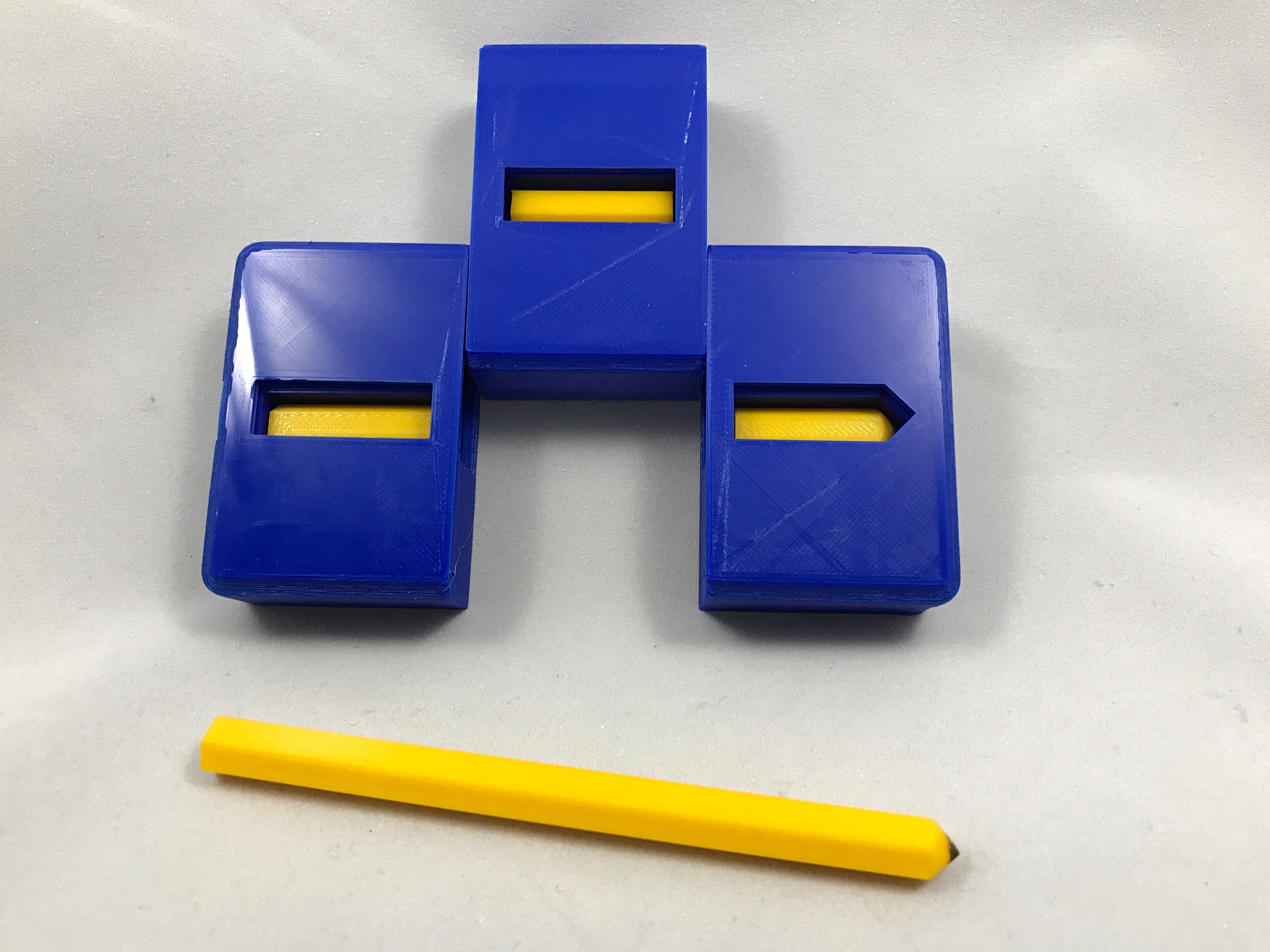
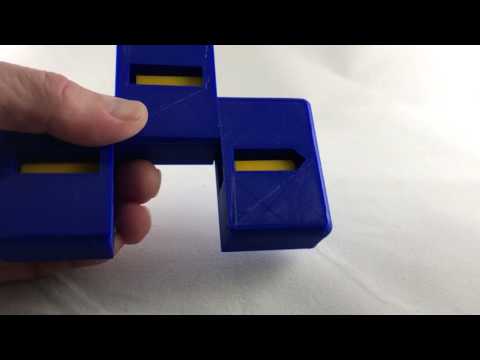

Spoiler Alert! If you do not wish to know how this "magic trick" works, do not proceed (but I hope you do)!
I designed Pencil Puzzler a few years back as a 3D printable version of an old magic trick. I've seen this style of magic trick using rope, pencils and even nails, but they all operate in the same general matter. This version includes all parts, even the "pencil", so nothing else is required other than a 3D printer and filament.
I probably forgot a file or two or something, so if you have any questions, please feel free to ask.
Designed using Autodesk Fusion 360, sliced using Cura 2.3.1, and printed in PLA on an Ultimaker 2+ Extended and an Ultimaker 3 Extended.
Print and Prepare the Parts.
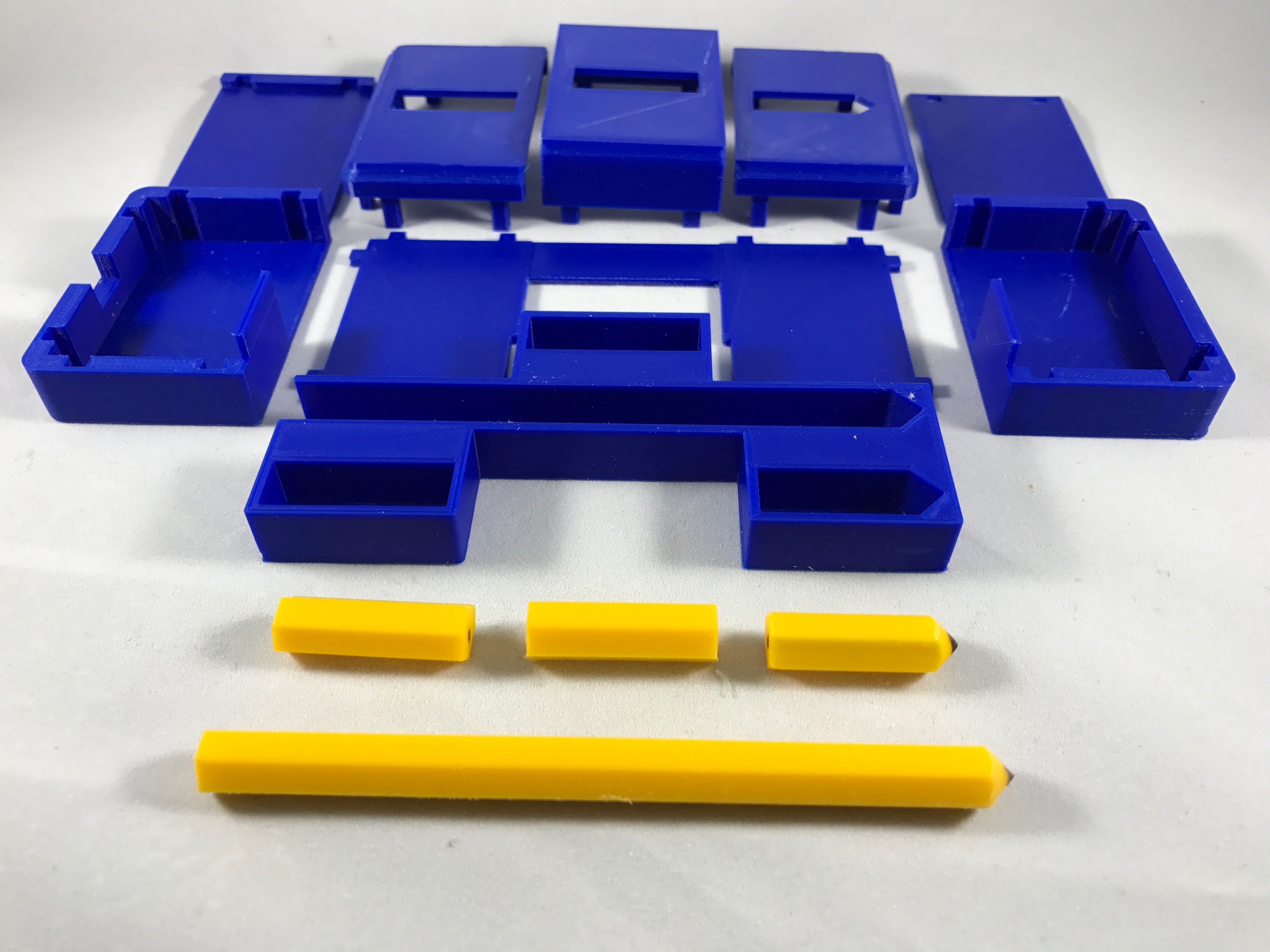
I printed my parts on both an Ultimaker 2+ Extended and an Ultimaker 3 Extended using .1mm vertical resolution and 20% infill.
Prior to assembly, test fit and trim, file, sand, etc. all parts as necessary for smooth movement of moving surfaces, and tight fit for non moving surfaces. Depending on the colors you chose and your printer settings, more or less trimming, filing and/or sanding may be required. Carefully file all edges that contacted the build plate to make absolutely sure that all build plate "ooze" is removed and that all edges are smooth. I used a flat jewelers file and plenty of patience to perform this step.
Study "Assembly Exploded.stl" carefully noting the locations and positions of the various components as assembly proceeds.
You may also notice I applied black coloring to simulate pencil lead to the ends of all the pencil pieces using a black indelible ink pen.
Downloads
Join the Lower Case Parts.
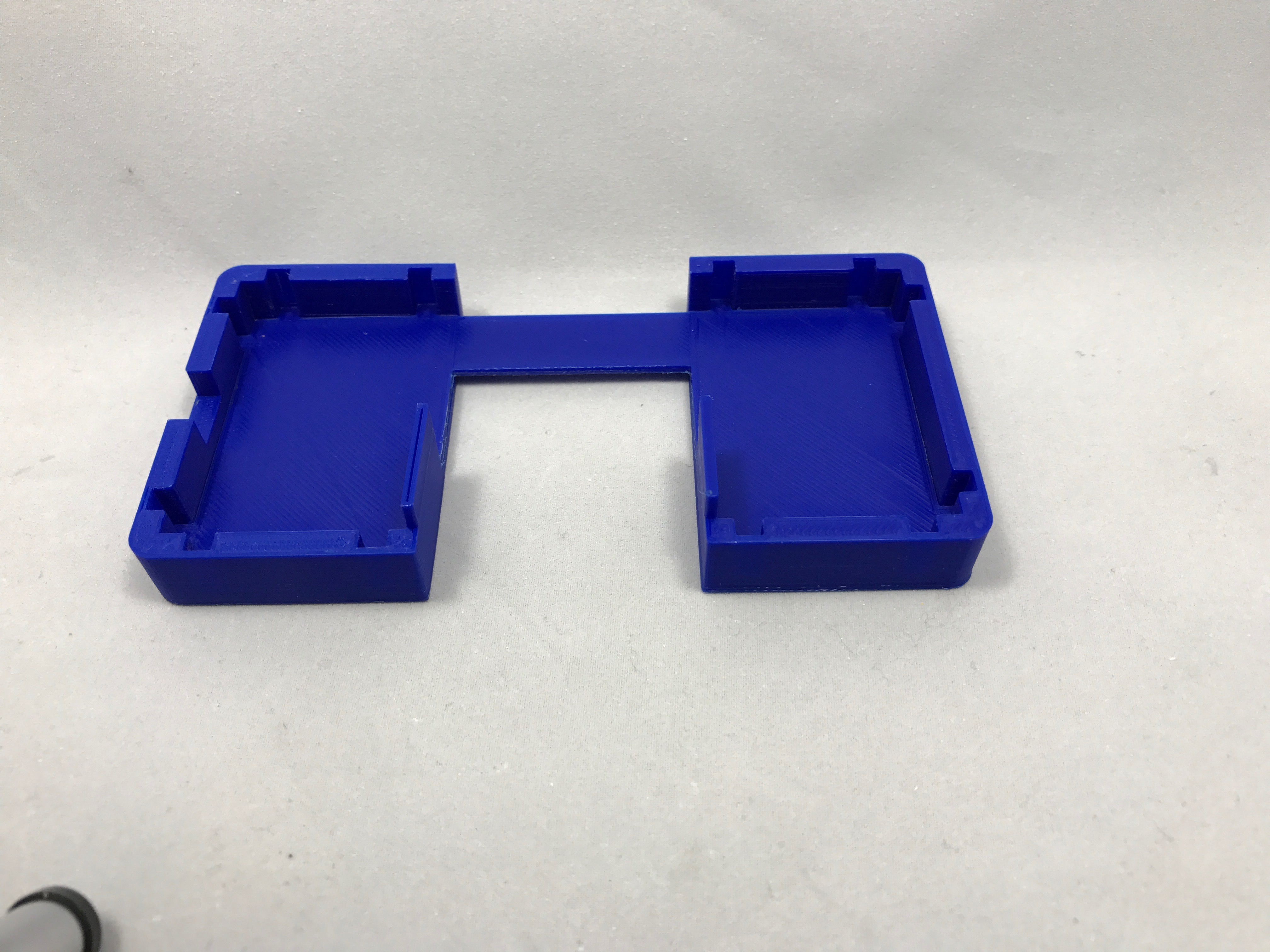
Using "Case Lower Joiner.stl", join "Case Lower A.stl" to "Case Lower B.stl". Carefully note the orientation of "Case Lower Joiner.stl", particularly the recessed cross member.
Assemble the Center Slide.
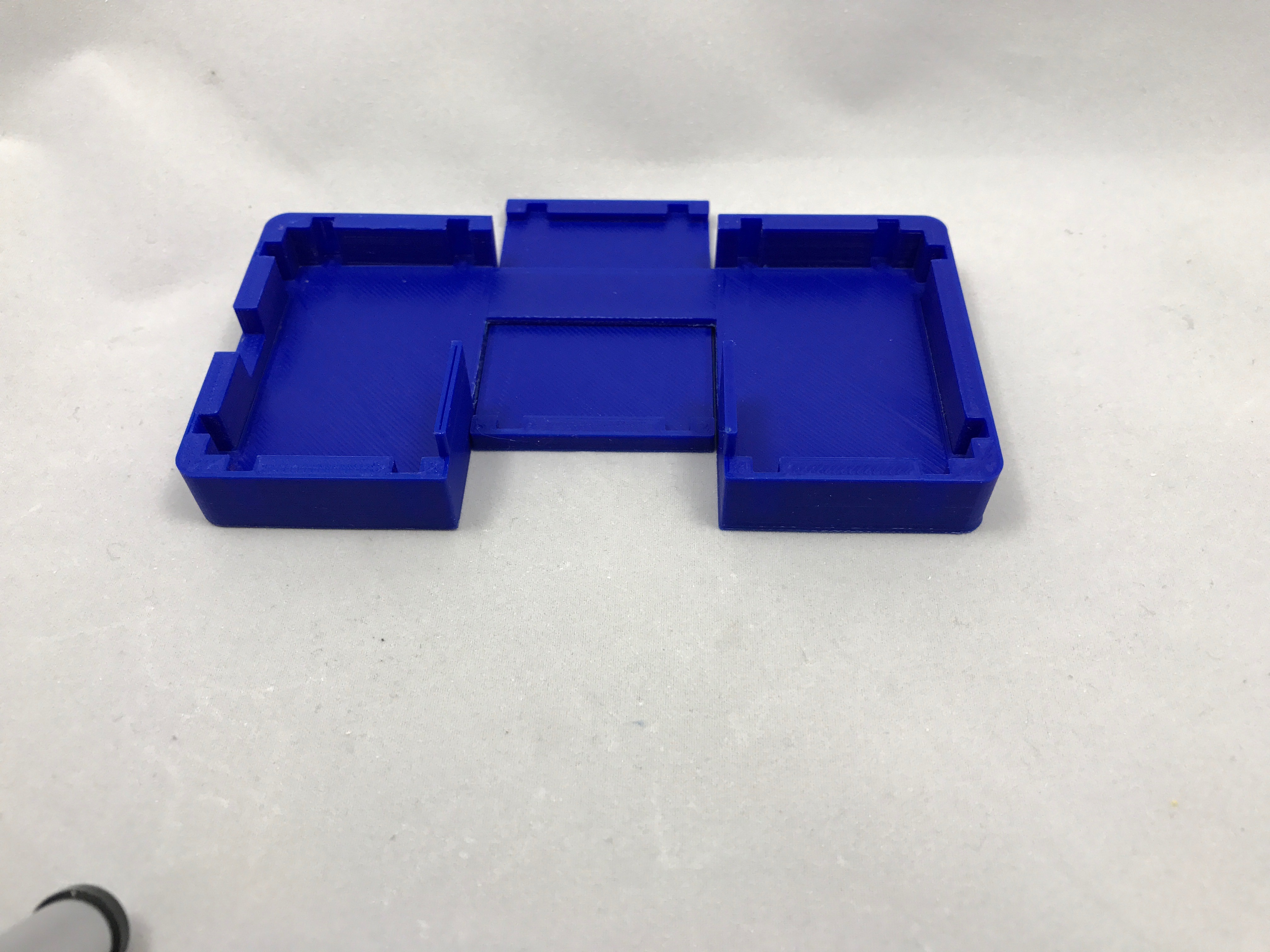
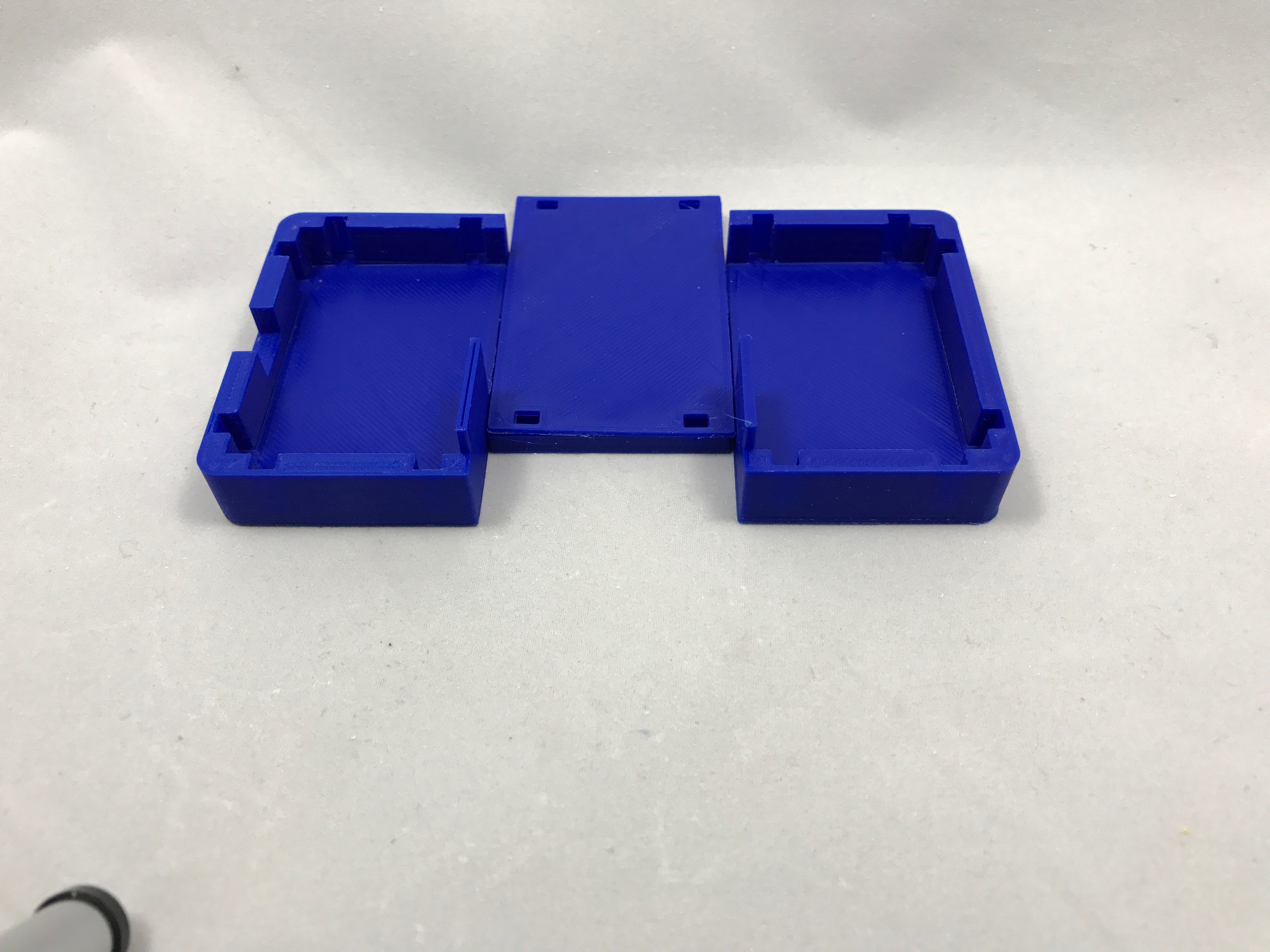
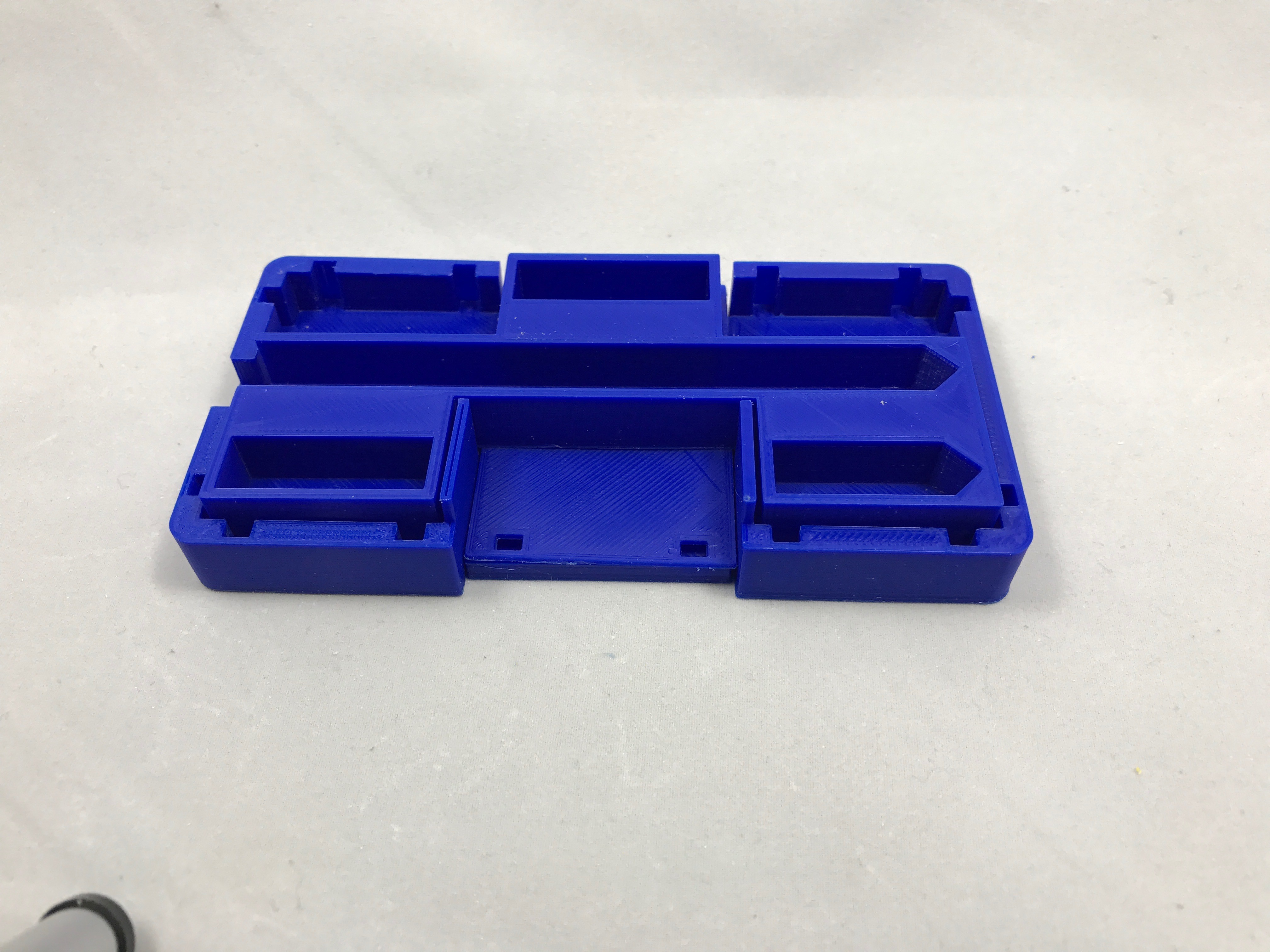
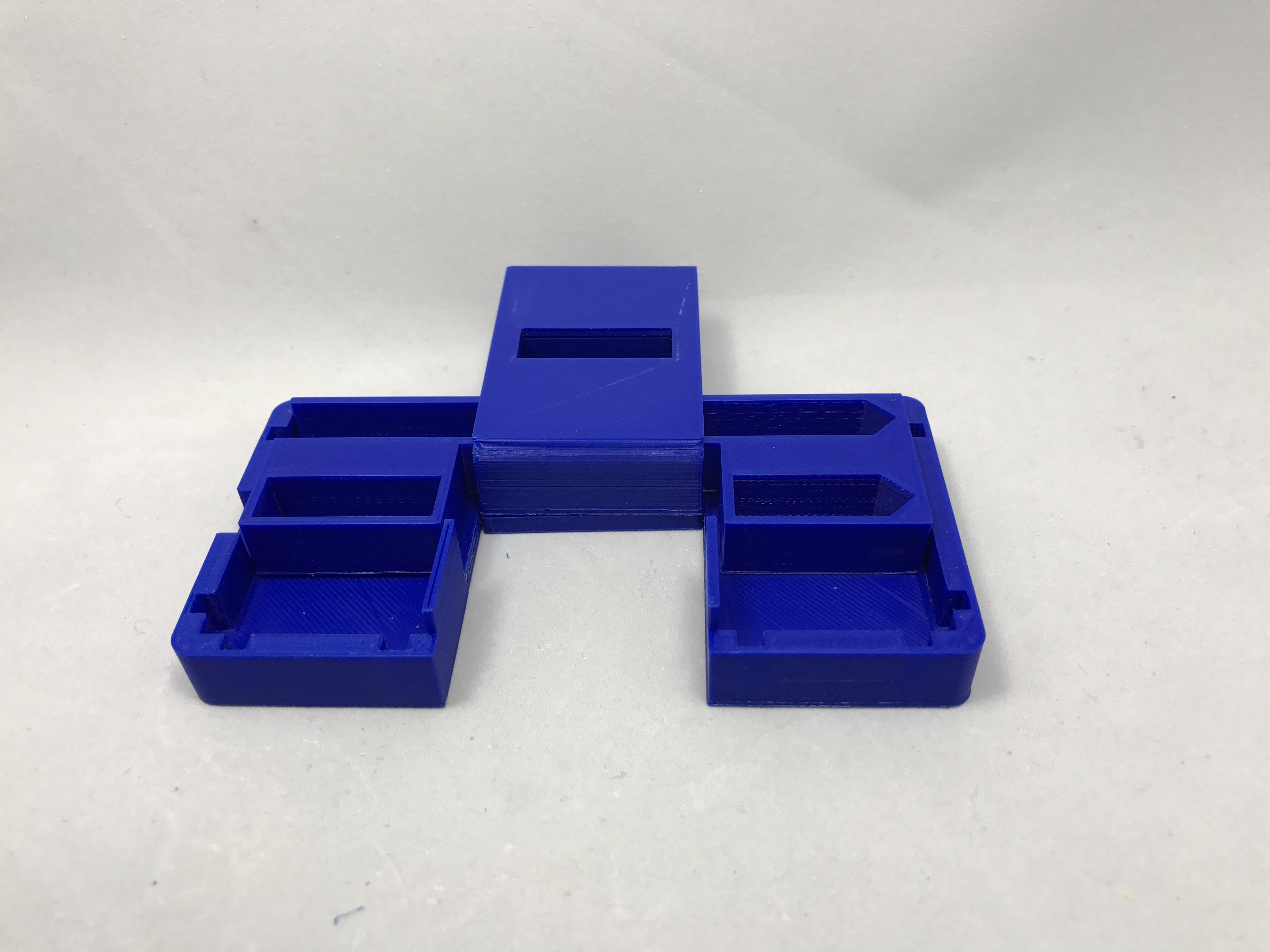
Start by positioning "Slide Bottom Outer.stl" under the case assembly as shown.
Position "Slide Bottom Inner.stl" onto "Slide Bottom Outer.stl" as shown. Thus "Slide Bottom Inner.stl" is on the top, followed by "Case Lower Joiner.stl", then "Slide Bottom Outer.stl" is on the bottom.
Position "Container Pencil.stl" into the assembly as shown.
Press "Case Upper B.stl" around "Container Pencil.stl" through "Slide Bottom Inner.stl" and into "Slide Bottom Outer.stl". This procedure finishes the center slide with "Case Upper B.stl" and "Slide Bottom Outer.stl" holding all the pieces together.
One complete, the center slide mechanism should operate. It may catch on the framework, but when the next step is finished, that should no longer occur.
Final Assembly
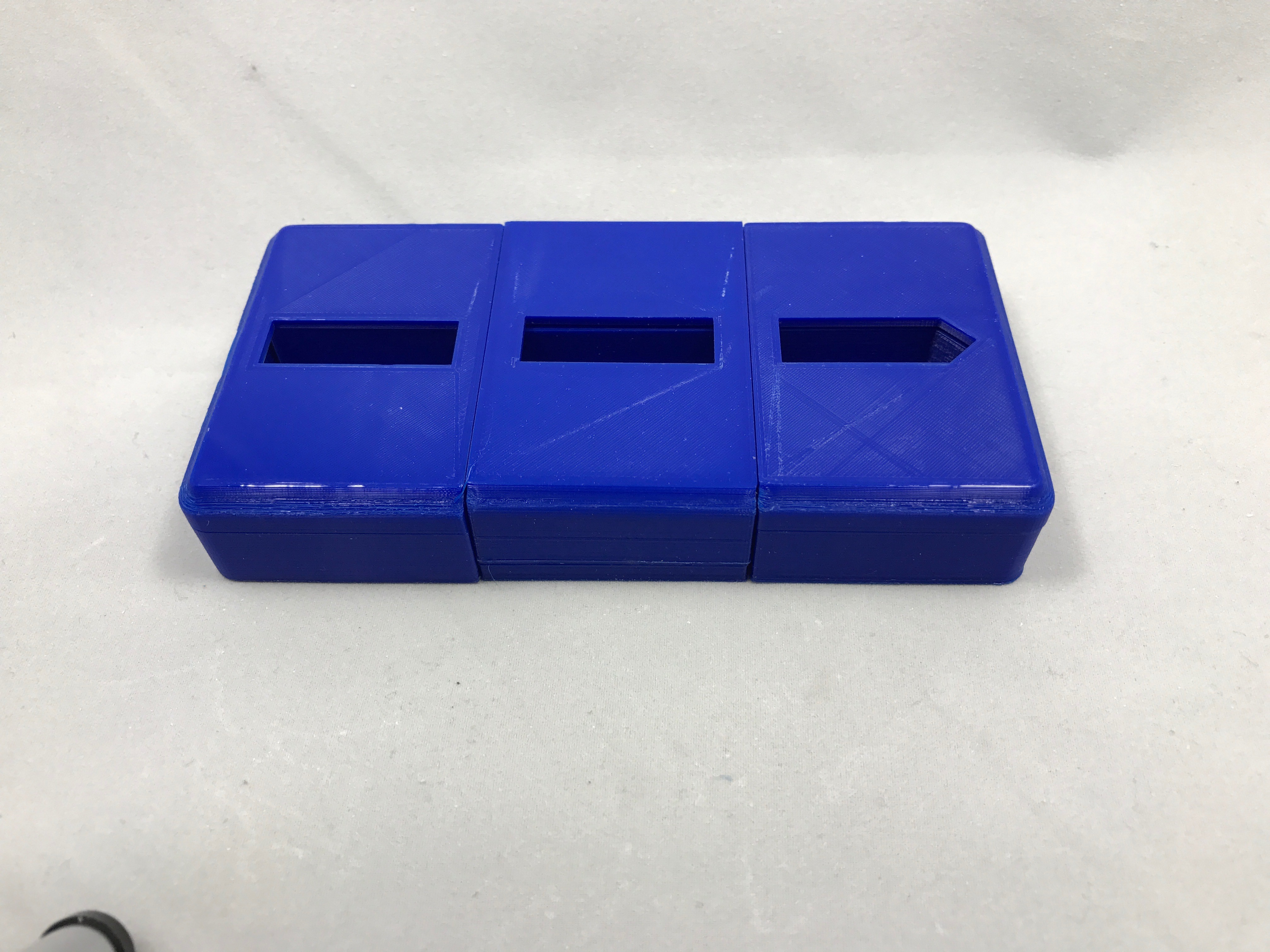
Press "Case Upper A.stl" into the left side assembly.
Press "Case Upper B.stl" onto the right side of the assembly.
The center slide should now operate freely.
See the video on how the "magic" is performed.
Hope you like it!